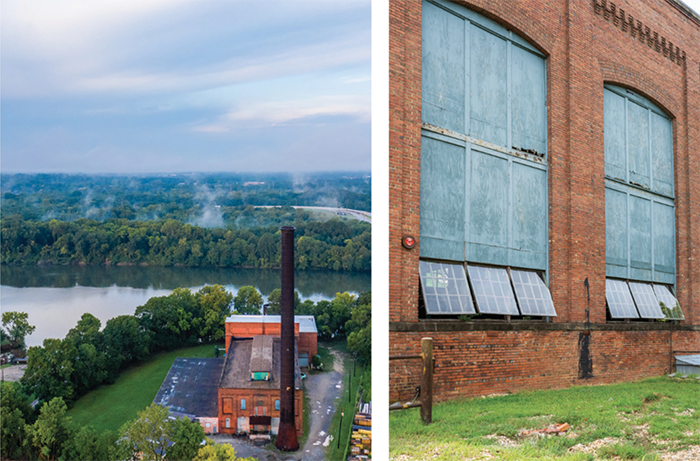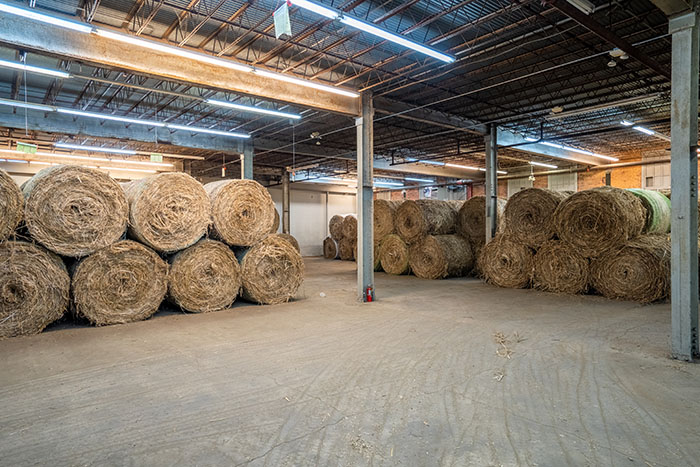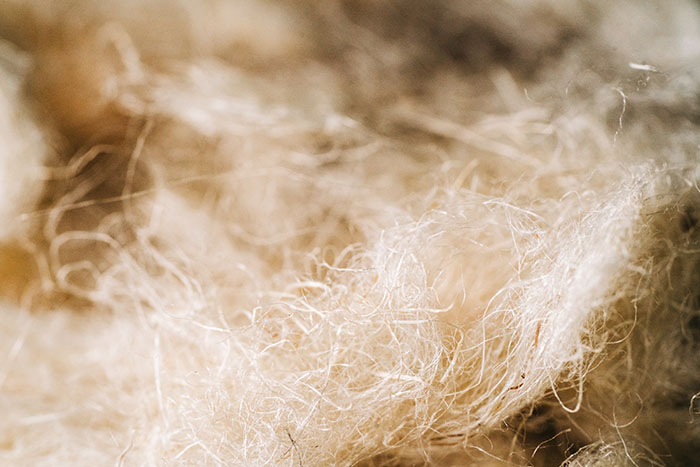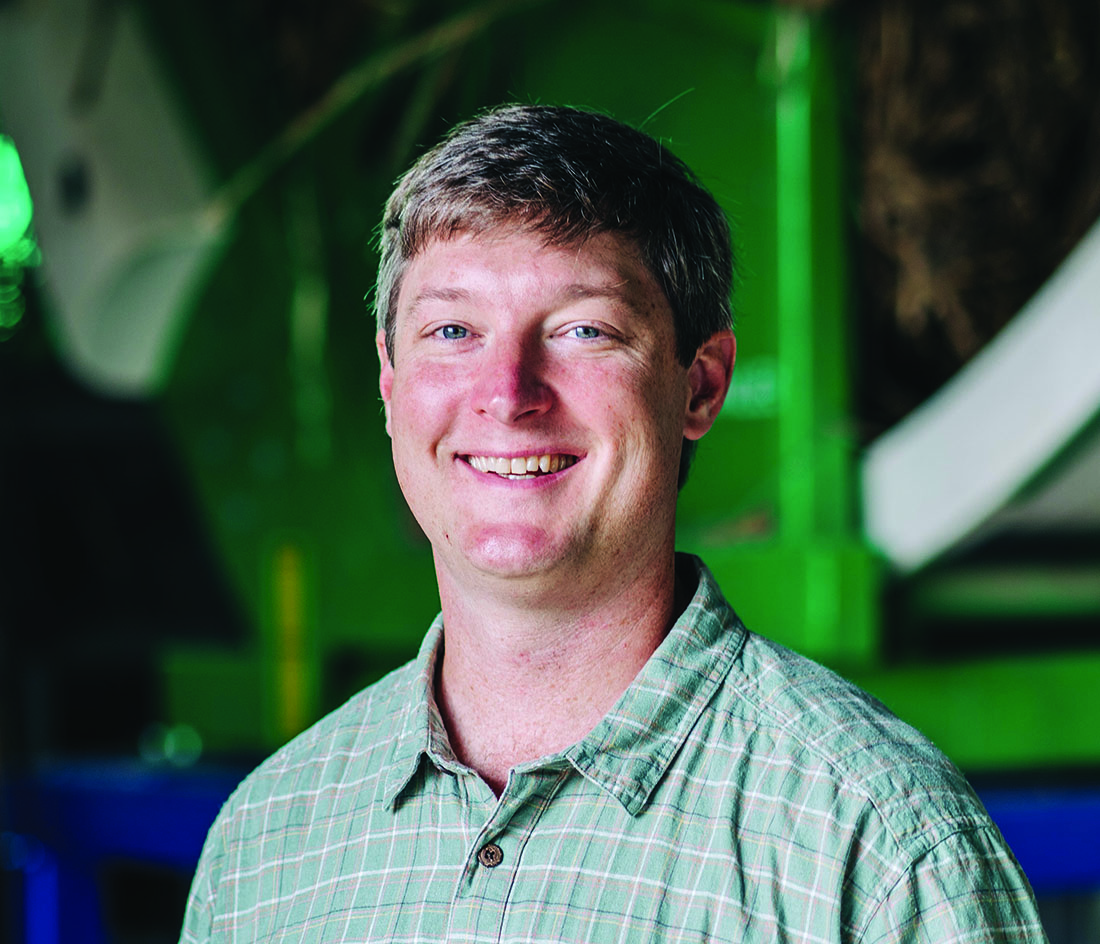Hemp has a long history as a raw material for American industry. Jamestown settlers introduced hemp to colonial America in the early 1600s for rope, paper, and other fiber-based products; they even imposed fines on those who didn’t produce the crop themselves. U.S. presidents George Washington and Thomas Jefferson grew hemp.
The U.S. Constitution and flag, two of America’s most cherished symbols, were made of hemp before it was prohibited. Industrial hemp growing was an important part of American agriculture, and farmers were encouraged by the government.
Hemp was a prominent crop in the United States until 1937, when the Marijuana Tax Act virtually obliterated the American hemp industry. During World War II, the crop saw a resurgence in the U.S., as it was used extensively to make military items including uniforms, canvas, and rope. The U.S. Department of Agriculture (USDA) even released a short documentary, “Hemp for Victory,” in 1942, which promoted the plant as a useful crop for the war cause.
The World War II hemp resurgence was short-lived, though. Until the passing of the 2014 Farm Bill, the Controlled Substances Act of 1970 kept industrial production dormant. Today, hemp is rapidly becoming an indispensable resource for CBD oil products and more recently a key feedstock for the textile industry.
The 2014 Agricultural Act, more commonly known as the 2014 Farm Bill, included section 7606, which allowed for universities and state departments of agriculture to cultivate industrial hemp, as long as it is cultivated and used for research. This piece of legislation gave way to the Agricultural Improvement Act of 2018, or the 2018 Farm Bill, which reclassified hemp (with less than 0.3% THC) from Schedule I, thus federally legalizing industrial production of the plant and allowed for its cultivation and distribution as a legal agricultural product.
This very well may be one of the things I am personally most excited about. It was very unfortunate to see the offshoring of an industry. There are many towns whose entire economy was centered on the mill and textiles that still to this day have not recovered. I believe we will see a reshoring and it is in the process of happening. Hemp is certainly going to play a big role in this.
Under the Hemp Farming Act, hemp cultivation is no longer limited to state departments and universities. In addition, the act allows farmers rights to water, crop insurance, and federal agricultural grants, as well as legal access to national banking. And it allows for hemp to be transported across state lines.
BastCore, an Alabama-based company, focused on hemp processing is one of a number of new companies playing in this space. A creator of a patented hemp technology that is helping to spur more efficient and broader use capabilities for hemp, BastCore recently received $2.8M oversubscribed Series A financing to expand its go-to-market strategy.
In this edition of IFJ, we speak with BastCore’s CEO, Coleman Beale, about hemp fiber and his company’s place within this growing segment of the textile industry.
Matt Migliore: As I understand it, BastCore began in 2014 after the Farm Bill here in the U.S. legalized the cultivation of hemp. What were you doing prior to founding BastCore, and what made hemp fiber an attractive opportunity for you?
Coleman Beale: Prior to founding BastCore I was the Chief Financial Officer of a privately held, fast-growing, VC-backed payments company. I have always enjoyed working in high growth areas where solutions are needed to solve large problems. We saw the passage of the 2014 Farm Bill as an opportunity to introduce a new raw material into industries. It was very attractive to think about how many different products can be produced from a single input. Additionally, the thought of building a business that could benefit our local economy was very inspiring.
Matt Migliore: BastCore is based in Montgomery, Alabama. What makes Montgomery a good location for the company to house its operation?
Coleman Beale: There are several factors that make Montgomery an ideal location for us. First, we are surround by very naturally rich, fertile soil. Second, logistically, we have good access to interstate, rail, and waterways. Finally, we have a Department of Agriculture that has done a great job of putting a regulatory system in place for our industry to grow.

Matt Migliore: Without giving away the “secret sauce,” what makes BastCore’s processing technology unique? What do you see as the company’s competitive advantage?
Coleman Beale: We started in 2014 with an idea to build a machine to process the stalks by separating the bast fibers from the hurd (wood). We have advanced our technology using an iterative approach over a period of years. One advance we have is our ability to produce a very clean material and not have to rely on expensive foreign systems.
Matt Migliore: Does BastCore grow its own hemp, or is the company solely focused on processing technology? How does BastCore source its raw material?
Coleman Beale: We are solely focused on processing technology. We are not farmers and believe it is better to have partnerships with data-driven farmers who are experts in their fields. Since this is a nascent market, we do not have the ability to buy hemp on the spot market. Therefore, we contract directly with farmers to source our raw materials. We have found that this approach allows us to develop long term relationships, which gives everyone more confidence to grow the industry.
Matt Migliore: How does the challenge of the varied legal status of hemp worldwide influence your strategy and market opportunity, if at all?
Coleman Beale: There is an exponential growing interest in hemp both domestically and worldwide. For avoidance of doubt for your readers, “Industrial Hemp” is now completely legal and no longer defined as part of a “controlled substance.” A little-known fact is that stalks have never been defined as a controlled substance and had their own specific carve. The challenge we now face is making sure there are separate and distinct rules for industrial use cases and consumable products such as CBD. Our strategy here revolves around a continuing education on this topic and making sure rules and regulations are not crafted without this consideration.

Matt Migliore: Given that the U.S. is relatively new to legalizing hemp, what were/are there lessons to be learned from areas of the world where hemp has been legal for a longer period of time? Does the fact that hemp has been available in other parts of the world for a longer period of time present any competitive challenges for a U.S.-based processor of hemp, like BastCore?
Coleman Beale: I think the biggest lesson to be learned is that you need the infrastructure in place to develop a reliable supply chain. This is something that takes time and patience. One thing to understand is, even though hemp has been legal for a longer period in other parts of the world, it was never a product in very high demand. This is in large part due to the U.S. being the largest consumer market in the world. Now that hemp is legal in the U.S., the consumer is much more educated and pulling demand through the supply chain. We are seeing a real interest in companies wanting to restore and source material domestically. Certainly, there is competition from other parts of the world. However, there are real questions regarding the traceability and lack of transparency in the processing. We have heard very troubling stories regarding bad labor practices at both the farm and processing level. We at BastCore are building detailed databases to give the market confidence in our supply and processing.
Matt Migliore: BastCore recently announced $2.8M of Series A financing. Where is BastCore in terms of its go-to-market strategy, and how will this new funding be used to help advance BastCore’s strategy going forward?
Coleman Beale: Great question. We are finalizing the buildout of our initial commercial line. Fortunately, we can produce product for the market. It is primarily adding pieces to the puzzle to make our operations more efficient, which allows us to scale. The funding will be used for working capital and CAPEX. We are hiring, buying equipment, adding supply – it’s a great American story.

Matt Migliore: Some reports predict the global industrial hemp market will grow to nearly $36B by 2026? How do you see the market potential for hemp fiber going forward? What are some of the applications you see as particularly attractive in the near and longer term?
Coleman Beale: Certainly, the market sizes you referenced are there and the potential is enormous. It is just extremely difficult to predict timing. A lot is going to depend on access to capital and how quickly processing infrastructure can get installed and come online. I see near term or terms applications in woven apparel such as denim – there are a lot of interesting projects there. The nonwoven space is very exciting to us, and we see a lot of long-term potential. As the R&D projects advance, I believe you will see an acceleration in market adoption.
Matt Migliore: In doing research to develop questions for this Q&A, I learned that BastCore is particularly excited to be part of the U.S. domestic supply chain for fabrics and garments. With much of that manufacturing having moved overseas during the past several decades, how do you see the reshoring of domestic fabric and garment production playing out and where do you see hemp fitting in?
Coleman Beale: This very well may be one of the things I am personally most excited about. It was very unfortunate to see the offshoring of an industry. There are many towns whose entire economy was centered on the mill and textiles that still to this day have not recovered. I believe we will see a reshoring and it is in the process of happening. Hemp is certainly going to play a big role in this. It is such a diverse crop with so many end-uses that it is going to have a seat at the table in terms of raw materials.
Matt Migliore: Is BastCore also focused on exporting hemp fiber to international markets, or is the U.S. the primary focus?
Coleman Beale: Yes, we do work with international markets. As you know, textiles is an international market and with so much infrastructure still overseas we have projects going on internationally. Again, we are a big believer in the U.S. market and reshoring efforts.
Matt Migliore: Are there any points you would like to make in conclusion that have not been touched upon in the previous questions?
Coleman Beale: Thank you so much for your interest in BastCore. We are always looking for new partners and projects, so I encourage any of your readers to reach out directly to us. We need to spread the story of industrial hemp and its potential as a powerful, environmentally friendly, economic growth engine.
For more information about BastCore, visit bastcore.com.
References:
- “American hemp history,” BastCore, https://bastcore.com/resources/hemp-history/.
- “Modern American Hemp Cultivation Legal in the U.S.,” BastCore, https://bastcore.com/resources/hemp-history/.
- “Industrial hemp market – 2020-2026,” Facts & Figures, https://www.globenewswire.com/news-release/2021/04/08/2206841/0/en/Global-Research-Study-on-Industrial-Hemp-Market-Size-Will-Reach-36-Billion-at-34-CAGR-by-2026-Facts-Factors.html.


